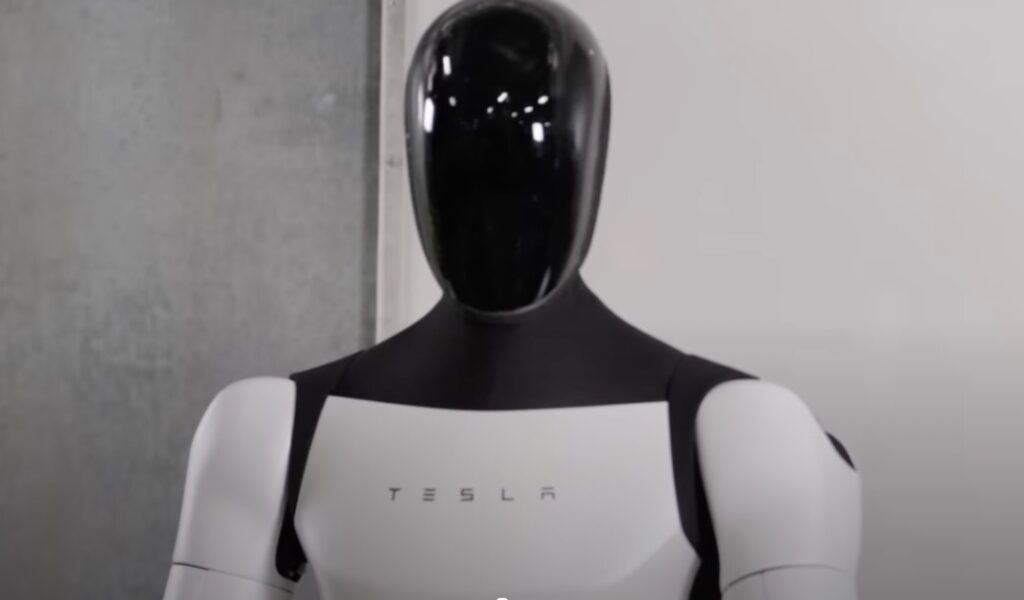Elon Musk’s Ambitious Bets Push Teams to the Limit as Robotaxis and Optimus Take Center Stage
- Intense Work Ahead: Tesla’s AI chief warns staff that 2026 will demand unprecedented effort to meet aggressive timelines for Robotaxi expansion and Optimus robot production.
- High-Stakes Milestones: Elon Musk’s massive pay package ties his potential trillionaire status to hitting bold targets, including deploying 1 million Robotaxis and humanoid robots.
- Rallying the Troops: In a pivotal all-hands meeting, leaders rally the Autopilot and Optimus teams, emphasizing their central role in Tesla’s transformation into an AI powerhouse.
In the high-octane world of Tesla, where innovation races ahead at breakneck speed, the company’s AI teams are gearing up for what could be their most grueling challenge yet. Last month, during a nearly two-hour all-hands meeting, Tesla’s vice president of AI software, Ashok Elluswamy, delivered a stark message to staff across the Autopilot and Optimus divisions: 2026 will be the “hardest year” of their lives. This wasn’t just tough talk; it was a rallying cry designed to galvanize the workforce amid Tesla‘s ambitious push into autonomous ride-hailing and humanoid robotics. As Tesla evolves from an electric vehicle pioneer to a leader in AI-driven technologies, these teams find themselves at the epicenter of CEO Elon Musk‘s grand vision, with immense pressure to deliver on timelines that could redefine the industry.
Elluswamy, who has taken on a leadership role in the Optimus team following the departure of former vice president Milan Kovac earlier this year, emphasized the need for intense focus and longer hours. Insiders described the meeting as motivational, with leaders from across the AI division outlining aggressive targets. For the Robotaxi service, Tesla aims to expand operations to eight to 10 metropolitan areas by the end of 2025, with more than a thousand ride-hailing vehicles on the road by year’s end. Meanwhile, Optimus—the company’s humanoid robot—is slated to begin production toward the end of 2026, with plans to ramp up to an annualized rate of 1 million units. Musk himself acknowledged the complexity during Tesla’s October earnings call, noting that the production ramp would be bottlenecked by the “slowest, dumbest, least lucky thing out of 10,000 unique items.” This underscores the intricate engineering challenges ahead, from supply chain hurdles to technological breakthroughs, all while competing in a rapidly evolving AI landscape dominated by players like Boston Dynamics and Figure AI.
At the heart of this push is Elon Musk’s recently approved pay package, a staggering deal that could catapult him to the world’s first trillionaire. Shareholders greenlit the package earlier this month, which includes moonshot milestones such as deploying 1 million Robotaxis on public roads and producing 1 million humanoid robots. Compensation experts have called it unconventional, designed to keep Musk laser-focused on Tesla amid his ventures like SpaceX and xAI. Musk even quipped during the October call that he needs the additional shares to maintain “strong influence” over the company, lest he feel uneasy building a “robot army.” This blend of humor and high stakes highlights Musk’s unique leadership style, where bold bets on futuristic tech are intertwined with personal incentives. For Tesla’s AI teams, this means their work isn’t just about innovation—it’s directly linked to the CEO’s fortunes and the company’s valuation, which has soared on promises of AI dominance.
The Autopilot and Optimus teams have long been Tesla’s elite units, operating in a high-priority bubble separate from other engineers, with private organizational charts and weekly meetings with Musk himself. Workers have reported grueling schedules, including Friday sessions with the Optimus team that sometimes stretch until midnight. This intensity isn’t new; since its inception, the Autopilot program has demanded long hours to advance Tesla’s Full Self-Driving software. Under Elluswamy’s guidance, Optimus has shifted toward a camera-focused approach, mirroring the training methods used for Autopilot—a strategic pivot that leverages Tesla’s strengths in computer vision and machine learning. Yet, this convergence of teams amplifies the pressure, as failures in one area could ripple across Musk’s interconnected empire.
From a broader perspective, Tesla’s 2026 crunch reflects the accelerating race in AI and robotics, where companies are betting big on technologies that could transform everyday life. Robotaxis promise to disrupt urban transportation, potentially reducing traffic congestion and emissions, while humanoid robots like Optimus could revolutionize manufacturing, elder care, and household tasks. However, these ambitions come with risks: regulatory hurdles for autonomous vehicles, ethical concerns around AI deployment, and the human cost of relentless work cultures in tech. Tesla’s story is emblematic of Silicon Valley’s ethos—push boundaries or get left behind—but it also raises questions about sustainability for employees. As one insider put it, the all-hands meeting was a call to arms, signaling that Tesla’s future hinges on the grit of its AI warriors. With Musk at the helm, 2026 isn’t just a year; it’s a proving ground for whether Tesla can turn sci-fi dreams into reality, potentially reshaping industries and economies in the process.

